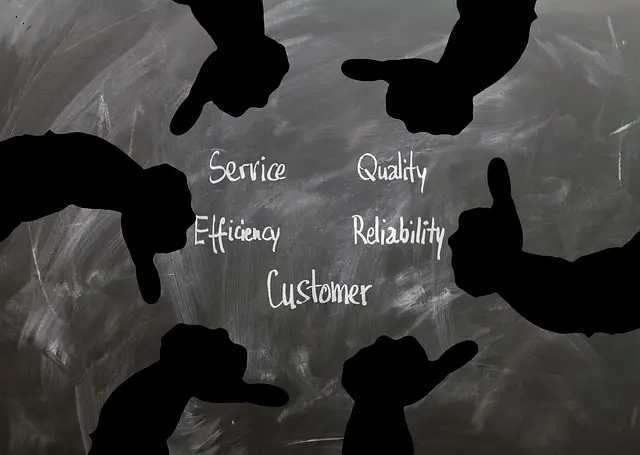Reliability is consistency in performance, while dependability extends to trustworthiness and overall trustworthy functioning over time and in various conditions.
TL;DR Reliability Vs. Dependability
Reliability is measured by metrics such as uptime, failure rate, and mean time between failures. It is crucial in industries where downtime can result in significant financial losses or even endanger lives.
Dependability entails factors like responsiveness, integrity, and predictability. It is vital for building trust with customers and maintaining long-term relationships.
What is Reliability?

Reliability refers to the consistency and stability of a system or product’s performance over time and under varying conditions.
It measures the ability of an entity to deliver accurate and dependable results consistently. In engineering, it often involves assessing the likelihood of a system to function without failure.
Reliability is crucial in ensuring products, systems, or processes meet expectations and fulfill their intended purposes, contributing to user confidence and satisfaction. Various methodologies, including statistical analysis and testing, are employed to evaluate and enhance reliability in fields ranging from technology and manufacturing to service industries.
What is Dependability?

Dependability encompasses the broader concept of trustworthiness, reliability, and the ability of a system or entity to deliver consistent and reliable performance over time.
It extends beyond mere functionality to include factors like safety, security, and resilience in the face of adverse conditions.
Dependability implies that users can rely on the system’s consistent and accurate operation, establishing trust in its overall performance and robustness. This concept is particularly crucial in critical systems, where failure or malfunction could have severe consequences. Ensuring dependability involves measures such as redundancy, fault tolerance, and comprehensive testing and verification processes.
Reliability Vs. Dependability – Key differences
| Aspect | Reliability | Dependability |
|---|---|---|
| Definition | Consistency and stability in performance. | Broader concept, includes trustworthiness, reliability, safety, and resilience. |
| Scope | Focuses on the consistent functionality of a system. | Encompasses reliability and extends to overall trustworthiness in various conditions. |
| Factors Considered | Mainly concerned with consistency and accuracy in performance. | Considers reliability, safety, security, and resilience to adverse conditions. |
| User Confidence | Builds user confidence through consistent and accurate results. | Establishes trust in the overall performance, safety, and resilience of the system. |
| Examples | A software application consistently producing accurate results. | An aircraft system that not only operates reliably but also maintains safety in various conditions. |
| Measures | Often measured by failure rates, mean time between failures (MTBF), etc. | Involves measures of reliability as well as safety, security, and overall trustworthiness. |
| Application | Applicable in various fields, including technology and manufacturing. | Crucial in critical systems such as aerospace, healthcare, and nuclear facilities. |
| Components | Mainly considers functional aspects of components. | Considers both functional and non-functional aspects, including safety mechanisms. |
| Enhancement | Improved through measures like redundancy and statistical analysis. | Enhanced through measures like redundancy, fault tolerance, and comprehensive testing. |
Factors That Affect Reliability and Dependability
Factors Affecting Reliability
- Design Quality: The initial design and engineering play a crucial role in determining the reliability of a system or product.
- Component Quality: The quality of individual components, including materials and manufacturing processes, directly influences overall reliability.
- Maintenance Practices: Regular maintenance and proper servicing contribute to sustained reliability over the system’s lifespan.
- Environmental Conditions: External factors such as temperature, humidity, and operational environment can impact the reliability of electronic and mechanical systems.
- Operational Stress: High-stress conditions, such as heavy usage or extreme operational loads, can affect the wear and tear on components, impacting reliability.
- Testing and Quality Control: Rigorous testing during development and manufacturing processes helps identify and address potential reliability issues.
- Redundancy: Incorporating redundancy, where critical components have backups, enhances reliability by minimizing the impact of component failures.
Factors Affecting Dependability
- Safety Measures: Safety features and protocols contribute to the dependability of a system, ensuring it operates without causing harm to users or the environment.
- Security Measures: Dependable systems often incorporate robust security measures to protect against unauthorized access, data breaches, and cyber threats.
- Resilience: The ability of a system to recover quickly from disruptions or failures is a key factor in ensuring its dependability.
- Adaptability: Systems that can adapt to changing conditions or requirements without compromising performance contribute to dependability.
- User Training and Documentation: Adequate training for users and comprehensive documentation enhance user understanding and contribute to the dependability of a system.
- Feedback Mechanisms: Establishing effective feedback loops helps identify issues early, allowing for timely interventions to maintain dependability.
- System Integration: The seamless integration of components and subsystems contributes to the overall dependability of a complex system.
- Regulatory Compliance: Ensuring compliance with relevant regulations and standards contributes to the dependability of systems, especially in critical industries.
Both reliability and dependability are multi-faceted concepts influenced by a combination of technical, operational, and human factors. Addressing these factors during design, development, and operational phases is essential to enhance the dependability and reliability of systems and products.
How to Improve Reliability and Dependability
Improving reliability and dependability involves a comprehensive approach that addresses various factors throughout the lifecycle of a system. Here are key strategies:
- Robust Design: Begin with a well-thought-out and robust design that considers reliability and dependability from the initial stages of development.
- Quality Components: Use high-quality components and materials to ensure the reliability of individual parts, reducing the likelihood of premature failures.
- Rigorous Testing: Implement thorough testing during the development phase to identify and rectify potential issues before the product or system is deployed.
- Redundancy: Integrate redundancy where critical components have backups, minimizing the impact of failures and contributing to both reliability and dependability.
- Predictive Maintenance: Implement predictive maintenance practices, leveraging data and analytics to anticipate and address potential issues before they lead to failures.
- Continuous Monitoring: Utilize continuous monitoring and real-time feedback mechanisms to detect anomalies, allowing for prompt interventions and maintenance.
- Safety Protocols: Incorporate robust safety protocols and mechanisms to enhance the dependability of the system, ensuring it operates safely under various conditions.
- Security Measures: Implement stringent security measures to protect against cyber threats, unauthorized access, and data breaches, enhancing dependability.
- Resilience Planning: Develop resilience plans to ensure the system can quickly recover from disruptions, contributing to its overall dependability.
- User Training: Provide comprehensive user training and clear documentation to enhance user understanding and minimize errors that could affect reliability.
- Regulatory Compliance: Ensure compliance with relevant regulations and industry standards to meet legal requirements and enhance the dependability of the system.
- Feedback Loops: Establish effective feedback loops from users and maintenance teams to identify and address issues promptly, contributing to ongoing improvements.
- Adaptability: Design systems to be adaptable to changing conditions or requirements, enhancing both reliability and dependability over time.
- Lifecycle Management: Implement effective lifecycle management practices, considering maintenance, upgrades, and eventual retirement or replacement to ensure continued reliability.
- Culture of Dependability: Foster a culture within the organization that prioritizes and values dependability, instilling a mindset of continuous improvement and attention to detail.
By integrating these strategies into the development, deployment, and maintenance processes, organizations can systematically enhance the reliability and dependability of their products and systems. Regular assessments and updates should be conducted to address emerging challenges and technological advancements.
Image Credits
Featured Image By – Gerd Altmann from Pixabay
Image 1 By – macrovector on Freepik
Image 2 By – Freepik








